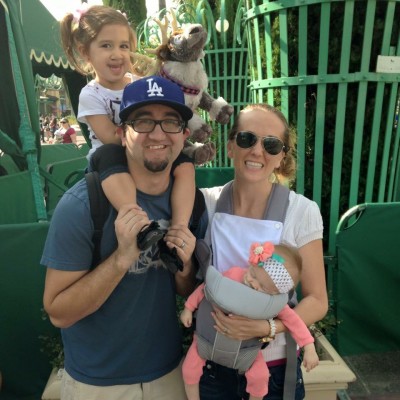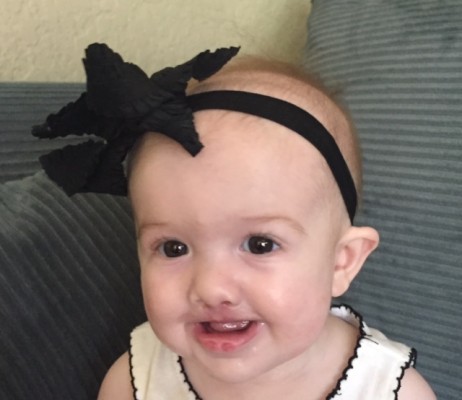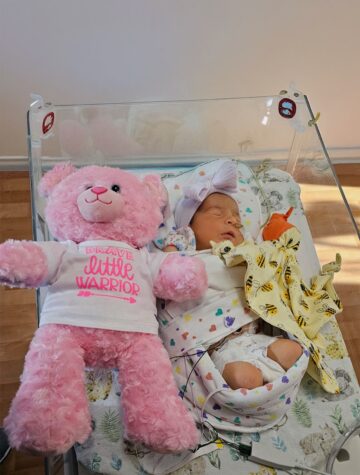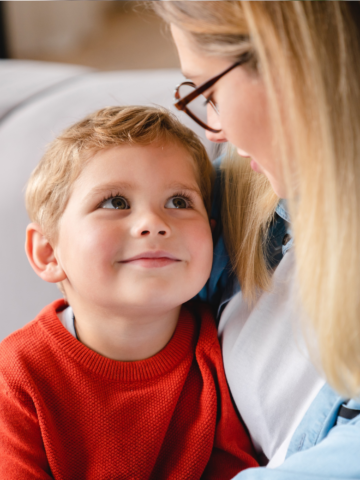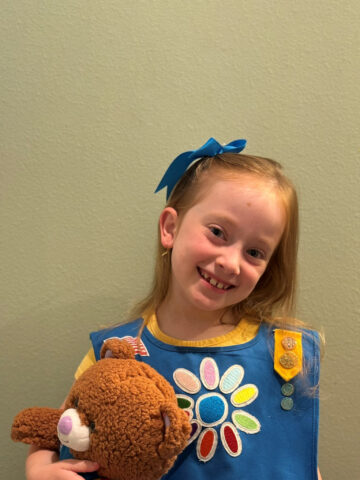Just like most sisters, Tristyn and Raigyn Snyder will share toys, clothes and friends throughout their lives. They also share something unique: a genetic condition called Van der Woude syndrome.
In the Genes
When Cindy Snyder was 12 weeks pregnant with Tristyn, a prenatal ultrasound showed that the baby had a bilateral cleft lip and palate. After Tristyn was born, specialists at the CHOC Cleft and Craniofacial Program noticed she also had small indentations on her bottom lip, or “lip pits,” a key marker of Van der Woude syndrome (VWS).
Van der Woude syndrome is the most common single-cause of cleft lip and palate. Individuals with VWS may have a cleft lip with or without a cleft palate, a submucous cleft palate, lip pits along the lower lip, or any combination of these features. Tristyn’s dad, Matt, also has Van der Woude syndrome and had a unilateral cleft lip as a child.

“If a child’s mother or father has Van der Woude syndrome, each child would have a 50 percent chance of also having the condition,” according to Dr. Neda Zadeh, a CHOC genetic specialist. “VWS can present differently in each person. For instance, a mom may have had lip pits, but her child could have a cleft palate and no evidence of lip pits.”
Shortly after Tristyn’s birth in 2011, she had a nasoalveolar molding (NAM) device fitted inside her mouth to partially close her cleft. Plastic surgeon Dr. Michael Sundine performed surgery at CHOC to repair Tristyn’s lip when she was seven months old, and he did a second surgery when she was 10 months old to finish her palate repair and remove the lip pits.
Now 3 years old, Tristyn barely shows any physical evidence of her condition. Other than a need for speech therapy, “No one even knows anything happened to her,” Cindy says.
The Decision to Expand Their Family
“We wanted to have another child, regardless,” Cindy says. “Some people are like, how could you have another one? Tristyn is so happy and healthy. How could we not have another one?”
In 2014, Cindy and Matt were thrilled to learn they were expecting another girl, Raigyn. An ultrasound showed that Raigyn’s lip was not forming properly, a sign that she likely had Van der Woude syndrome. A genetic test could have confirmed it, but the Snyders opted out.
“We didn’t really need to know either way, and we felt like the cleft was enough to know,” Cindy says.
The Snyders were prepared when Raigyn was born with a bilateral cleft lip and palate. She wore a NAM device and recently had surgery to repair her lip. In a few months, she’ll have another procedure to repair her palate. Cindy is confident that Raigyn will continue to develop normally, just like her big sister.
“They are perfectly healthy children,” Cindy says. “Everyone’s born with different things, and this is just what they were born with.”

